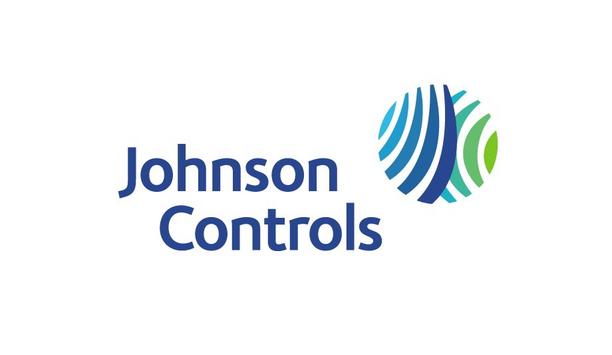According to the Carbon Trust, around 40% of commercial floor space is expected to be air-conditioned by 2020, compared with only 10% at the end of 1994. Demand is therefore increasing rapidly and due to this, building owners and operators are encouraged to look carefully at energy consumption, and heating, ventilation, and air conditioning, in particular, to see where savings can be made.
The Carbon Trust also suggests that specifying a new air conditioning system should consider both user and client requirements, including foreseeable changes. This article explores the adaptability of air conditioning systems and their application to commercial office space.
Building services
Even adequately specified systems with good initial design can suffer reduced operational efficiency after a change of use Future change of use is undeniably a huge issue for the building services industry, and in some cases, it could be said that by the time a building has been built, the design may well have been superseded. Even adequately specified systems with good initial design can suffer reduced operational efficiency after a change of use, occupational density, and associated heat loads, or even full spatial reconfiguration, as the existing capacity may not be available to meet the new requirements.
At worst, poorly designed building services may never meet the needs of speculative occupants, and all too often catastrophic wastage of construction materials can be seen at building sites where inadequate services quickly become redundant and are consequently removed rather than rectified.
AETs underfloor systems
In a recent article, low-level services in comparison with ceiling-based services, deriving that floor-level services offer a number of benefits. AET has supplied underfloor systems to buildings worldwide since the early 1990s, and some 25 years later, it still, maintain some of their original UfAC installations in the UK.
These buildings and the internal spatial requirements have evolved significantly over the years, keeping up with the demands of fast-changing work environments. Good initial services design has allowed these buildings to maintain the pace of churn within the workspace, retain much of the original equipment, with only essential upgrades to controls and communications required.
In some cases, clients have opted for EC fan upgrades, and perhaps to increase the capacity of the zone unit, but the option for re-use and reconfiguring equipment is prevalent.
Installation at Jaguar Land Rover’s Gaydon plant
The 1996 installation at Jaguar Land Rover’s Gaydon plant in Warwickshire is an excellent example of how the facilities team has made the best use of the flexible underfloor system, easily catering to frequent changes in occupants density and spatial layouts in the BCO award-winning office building. They also reported a significant increase in user satisfaction.
UfAC was specified as an option that would bring cooling to the inner areas of each deep space floor area
At Tricorn House in Birmingham, UfAC was specified as an option that would bring cooling to the inner areas of each deep space floor area, while maximizing headroom with a restrictive 2.8m slab to underside slab height. Over the phased twelve-year refurbishment, the system has proved to be adaptable and flexible for the speculative, multi-tenanted building, easily accommodating increasing cooling load requirements through higher density and occupant demand at the Cat-B fit-out stage.
A further feature was the addition of units that introduce fresh untreated air at floor level to the downflow units, significantly reducing plant space riser and maintenance requirements.
Sustainability of underfloor systems
Underfloor systems are deemed to be sustainable. By employing modular equipment and zoned layouts, each zone can be operated with autonomy, but it is the inherent flexibility of the system that can futureproof a building for the specifier.
A British Council of Offices (BCO) report published in 2002, “Sustainable buildings are a better business, can we deliver them together?” compares various air conditioning options over a 25 year period and suggests that the combined capital costs for the developer (CAT-A) and tenant (CAT-B) is the lowest for the underfloor system, and it is considerably cheaper when considering other factors such as churn, energy, replacement, and maintenance.
Well-designed system
The modularity of UfAC equipment is a distinct advantage when proceeding from CAT-A to CAT-B fit-out. A well-designed system with an effective zoning strategy will have taken into account future capacity for the zone downflow units, and additional fan terminal units to cater to the occupied loads can be easily added into the zone with minimal disruption as they are designed to be interchangeable with a standard 600mm x 600mm floor tile.
The interchangeability also allows easy reconfiguration to accommodate partitions and cellular office spaces within the zone. The concept is very simple but very effective.
Cost-efficient based on comparisons
Comparison of different air conditioning systems considers the whole life costs and not just the initial capital cost Comparison of different air conditioning systems must take into account whole life costs and not simply the initial capital cost. Operational efficiency will change along with the use of the building and peak performance can be maintained through regular maintenance and correct commissioning procedures.
Underfloor systems can prove advantageous, considering that the majority of the equipment is located at floor level, maintenance is simple and easy without the need for working at heights, and is therefore proven to be easier and more cost-effective when compared with ceiling-based systems.
Panasonic in Paris quoted a net saving in the cost of change of $150/m2 comparing a building with a UfAC system and a building with a Fan Coil system. Time spent on reconfiguration was reduced to 1 week from 10 weeks by adopting the UfAC system. Dramatic figures which, over the life of a building equate to huge financial savings.















